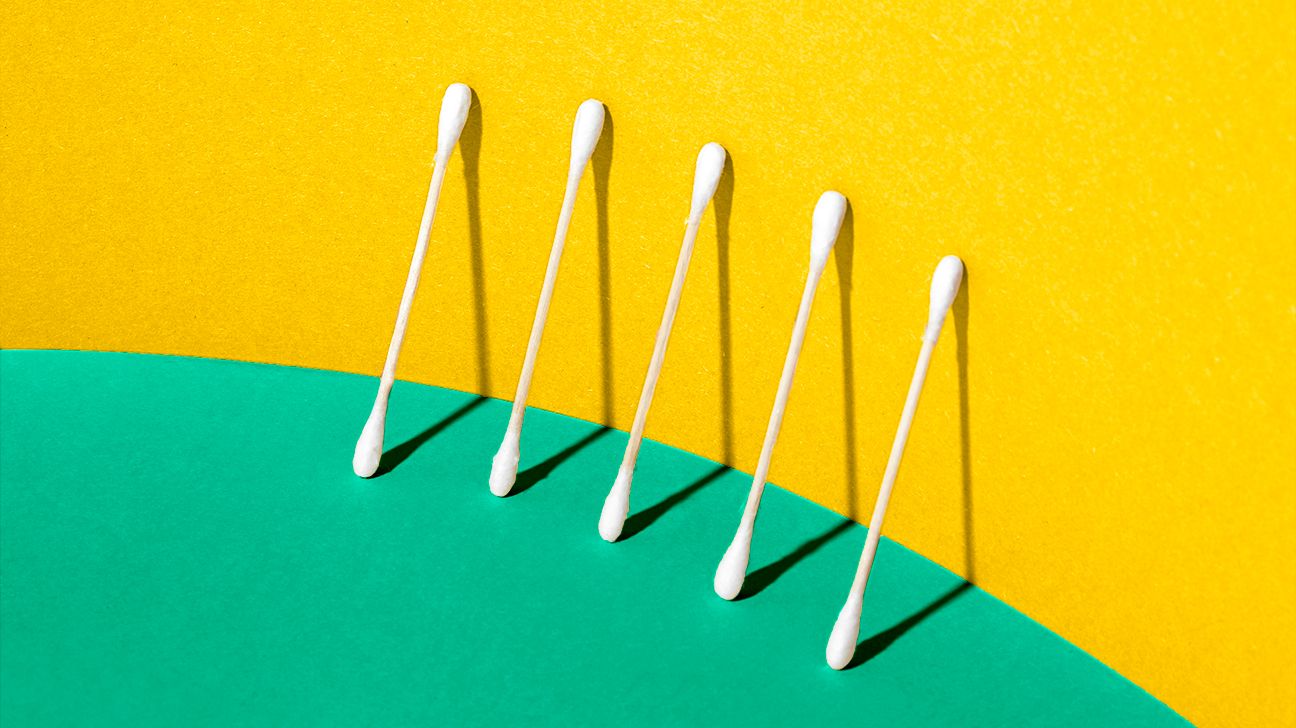Earwax is one of those annoying facts of life, and for many of us, Q-tips (aka cotton buds) are a satisfying way to get the gunk out.
Ever since seeing Shrek pull an entire candle’s worth of wax from his ear, sticking something in your ear and yanking out a treasure trove of waxy gunk has held a strange fascination for many people.
However, rumor has it that invading your ears with Q-tips isn’t great for you in the long run. And we don’t deal in rumors! So we reached out to ear, nose, and throat doctors to get to the truth about whether Q-tips really are harmful.
We also asked them about the best alternatives for spring cleaning the world behind your lobes without any permanent damage.
The consensus? As much as we love that so fresh, so clean feeling (so fresh and so clean, clean), if you have any willpower, it may be time to wean yourself off cotton swabs.
According to a study carried out in England in 2011, Q-tip use is the most common cause of “accidental penetrating ear injury” in children.
A different study suggested that at 15 to 20 percent of people “disagreed” with the scientific assertion that Q-tips can cause impacted wax, perforation, and infection.
(It’s also a terrible idea to share Q-tips for skin care purposes.)
They do much more harm than good, and excessive ear cleaning will almost certainly land you in the doctor’s office, says Leon Chen, MD, an ear, nose, and throat doctor at Manhattan’s ENT and Allergy Associates.
While you may see a satisfying bit of yellow on the cotton bud, you might increase the risk of the following ear problems:
- pushing most of the wax deeper into your ear canal, past where it’s naturally produced (and ideally should stay)
- damage to the sensitive skin around the ear canal, which may cause infection
- damage to the eardrum
As tempting as it may be, don’t do it. Shrek is a fairytale, but to ENT doctors, he’s a walking horror story.
Q-tips are actually quite useful for removing henna tattoos, though.
We kept our ear to the ground for solutions, so you don’t have to. (That’s not one of the solutions, by the way — it’s pretty unhygienic.)
The first point our ENT friends made was that you might not actually need to clean earwax at all. Wait, what? But it’s so icky?
Well, Dale Tylor, MD, a pediatric and general otolaryngologist at Washington Township Medical Foundation in Fremont, CA, backs us up.
“Earwax holds antibiotic and antifungal properties,” says Tylor. “Too much cleaning can lead to ear and skin complications down the road, from ear infections to eczema in the outer ear.”
Even more concerning, she adds that it’s pretty common to see patients who’ve poked a hole through their eardrum after using cotton swabs. Which is an awful lot of physical trauma to go through simply because your ears were a bit gunky.
(They can help with skin care, though, so don’t rule them out completely.)
If you really, truly can’t cut it cold turkey, Tylor recommends limiting your cleaning to three times per month. And it’ll be a lot easier to stop swabbing armed with the mental image she just gave us.
To avoid any eardrum-puncture mishaps, take the following steps:
- Only clean after a shower, since the heat causes the wax to melt.
- Line up a fingernail at the point where the cotton meets the Q-tip stick — this will be your safeguard to make sure you don’t go too deep.
- Gently wipe inside your ear.
- Try not to obsess over whether there’s any earwax left.
To avoid the scenario altogether, she advises people ditch Q-tips and go for an oil and hydrogen peroxide routine instead:
- Once a week before bedtime, fill an eyedropper with olive or mineral oil.
- Put up to three drops inside each ear, and massage the triangle of cartilage that covers your ear to coat your ear canal.
- Follow up with a cotton ball to keep the oil off your pillowcase (because eww).
- The next day, when you’re in the shower, pour a bit of hydrogen peroxide on your hand and rub it into your ear.
- The peroxide will bubble out, taking the softened wax with it and leaving you wax- and worry-free.
And remember — you may not need to do this at all. The National Institute on Deafness and Other Communication Disorders (NIDCC), who know their ears from their elbow, suggest that only 1 in 10 children and 1 in 20 adults have excessive earwax.
So stop digging for both wax and excuses. There are other, less risky ways. You owe it to yourself and your ears. Hygiene is the one — here’s how to shower properly.
Earwax is perfectly natural and actually good for you in that it can help you prevent ear infections.
If you really do feel the urge to clean out your ears, limit it to a few times a month and don’t use Q-tips to do so (if you really have to use a Q-tip, do it gently after a hot shower). An oil and hydrogen peroxide routine is safer and more effective.
You can and should step your personal hygiene game up today. Ears are just one part of the puzzle.


